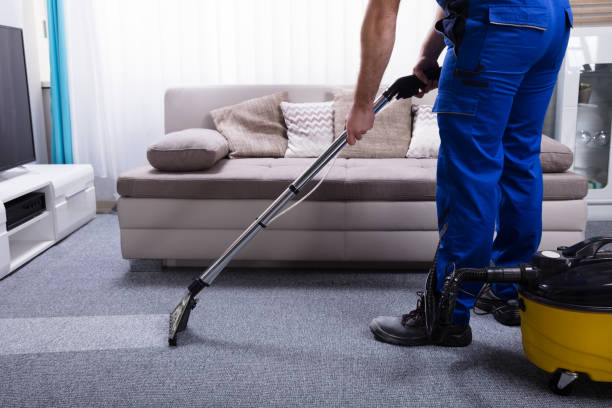Upholstery is one of those parts of a home that quietly collects life’s daily messes. Sofas hold the weight of movie nights, armchairs catch the crumbs of quick snacks, and dining chairs take the brunt of family meals. Over time, even the most well-kept furniture begins to show signs of wear, dirt, and stains. While regular vacuuming helps, there comes a point when deeper care is needed. This is where professional upholstery cleaning makes a real difference. Just like carpet cleaning Westborough MA helps restore floors, upholstery cleaning restores freshness and comfort to the furniture we use every day.
Why Upholstery Needs Special Care
Unlike hard floors or even carpets, upholstered furniture is made of layers of fabric, padding, and sometimes delicate fibers. Dirt doesn’t just sit on the surface—it works its way deep into the material. Dust, allergens, pet dander, and food particles build up inside cushions and armrests where regular cleaning tools can’t reach.
Moisture also plays a role. Small spills that seem harmless may soak into the padding, creating stains or odors that don’t go away with surface cleaning. Over time, this not only affects appearance but can shorten the life of the furniture.
Professional cleaning is designed to handle these hidden problems by reaching deep into fabrics and extracting what ordinary cleaning misses.
The Process of Professional Upholstery Cleaning
Every professional service may use slightly different techniques, but the core steps are similar. These methods are designed to protect the fabric while thoroughly removing dirt, stains, and allergens.
Step 1: Inspection and Fabric Testing
The process usually starts with an inspection. The cleaner examines the furniture for stains, wear, and the type of fabric. This matters because not all upholstery can be cleaned the same way. Cotton, microfiber, leather, and synthetic blends all require different treatments. A quick fabric test helps determine the safest cleaning method.
Step 2: Dry Soil Removal
Before any wet cleaning begins, loose dirt and dust are removed. This step is more than just a quick vacuum. Professional tools with stronger suction and specialized attachments reach into crevices, seams, and cushions to lift dry soil that would otherwise turn into mud during wet cleaning.
Step 3: Pre-Treatment of Stains
Stains are treated with targeted solutions based on their type. A coffee spill requires different handling than an ink mark or grease spot. By applying pre-treatment, the cleaner breaks down the stain before the main cleaning begins, making it easier to remove without damaging the fabric.
Step 4: Deep Cleaning
The main cleaning method depends on the upholstery material. Common techniques include:
- Hot Water Extraction (Steam Cleaning): This involves injecting hot water and cleaning agents into the fabric, then extracting them with powerful suction. It removes dirt, bacteria, and allergens deep inside the fibers.
- Dry Cleaning Method: For delicate fabrics that can’t handle much water, low-moisture cleaning solutions are applied and then removed with gentle agitation and suction.
- Foam or Shampoo Cleaning: A foamy cleaner is applied to lift soil, then carefully removed to avoid leaving residue.
Step 5: Rinsing and Extraction
Rinsing ensures that cleaning agents and loosened dirt are fully removed. High-powered extraction equipment removes moisture quickly, leaving fabrics only slightly damp. This helps prevent mold or mildew growth and speeds up drying time.
Step 6: Grooming and Drying
After cleaning, the fabric is gently brushed or groomed to restore its natural texture and appearance. Air movers or fans may be used to speed up drying, so the furniture is ready for use within hours instead of days.
Step 7: Protective Treatments (Optional)
Some homeowners choose to add a protective coating that repels stains and spills. This invisible layer makes future cleaning easier and extends the life of the upholstery.
Benefits Beyond Appearance
Professional upholstery cleaning does more than make furniture look better. It improves indoor air quality by removing allergens like dust mites and pet dander. It also eliminates odors caused by spills, pets, or everyday use. For families with children or pets, this can make a noticeable difference in comfort and health.
Another benefit is longevity. Furniture is an investment, and proper cleaning can add years to its life. Fabrics stay stronger, colors remain brighter, and cushions maintain their comfort longer.
Mistakes Homeowners Often Make
Many people try to clean upholstery on their own with store-bought sprays or rented machines. While these methods may help temporarily, they often leave behind residue that attracts more dirt over time. Using too much water is another common mistake, which can lead to damp padding and unpleasant odors.
Skipping professional cleaning for years is also risky. Dirt that has settled deep into the fabric becomes harder to remove, and stains set permanently. Regular maintenance every 12–18 months prevents these problems.
Frequently Asked Questions
1. How often should upholstery be professionally cleaned?
Most experts recommend every 12 to 18 months, but households with pets or young children may benefit from more frequent cleaning.
2. Can all fabrics be cleaned the same way?
No. Different fabrics require different methods. Professionals test the fabric first to choose the safest and most effective approach.
3. How long does it take for furniture to dry after cleaning?
With professional equipment, most upholstery dries within 2 to 6 hours. Delicate fabrics may take slightly longer.
4. Does professional cleaning remove pet odors?
Yes, when done correctly. Deep cleaning removes the sources of odors, not just the surface smell.
5. Is protective treatment worth it?
For households with pets, kids, or frequent guests, protective treatments can help prevent stains and make maintenance easier.
Final Thoughts
Professional upholstery cleaning combines knowledge, specialized equipment, and the right products to bring new life to furniture. From careful fabric testing to deep extraction and fast drying, the process is designed to clean safely and effectively. It’s more than cosmetic—it’s about creating a cleaner, healthier living space while protecting the investment you’ve made in your home.
And if you’re already thinking about refreshing more than just your furniture, services like post construction cleaning Massachusetts show how professional care extends beyond upholstery to every corner of your home.










